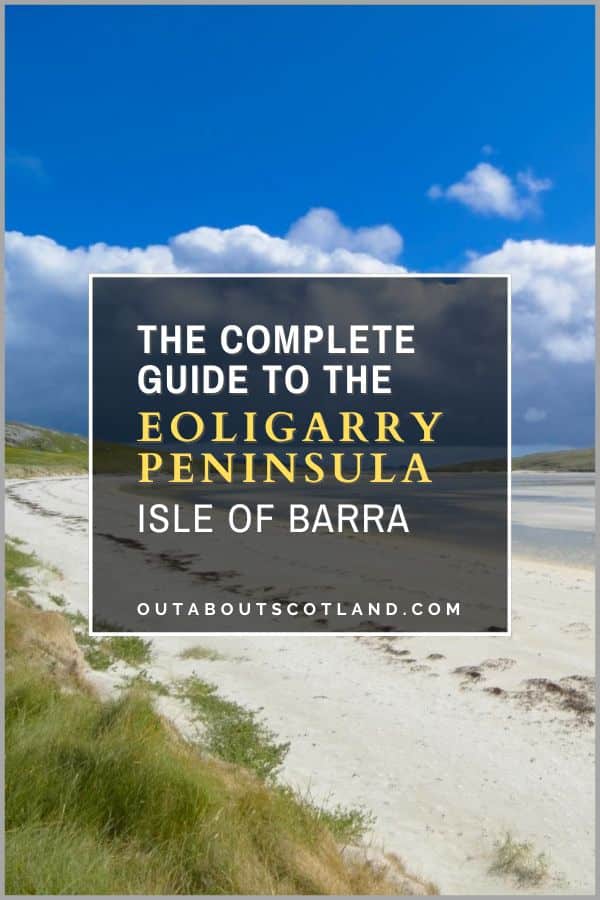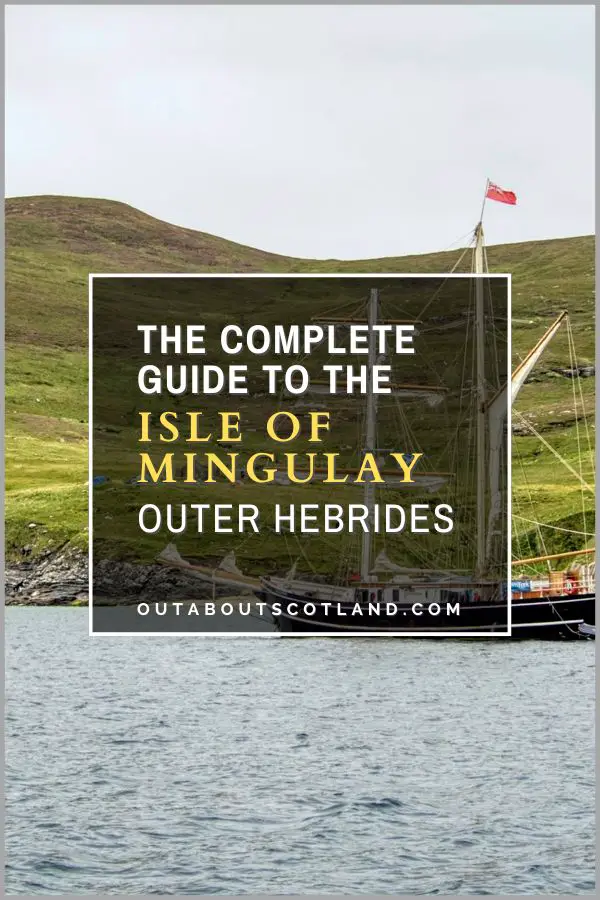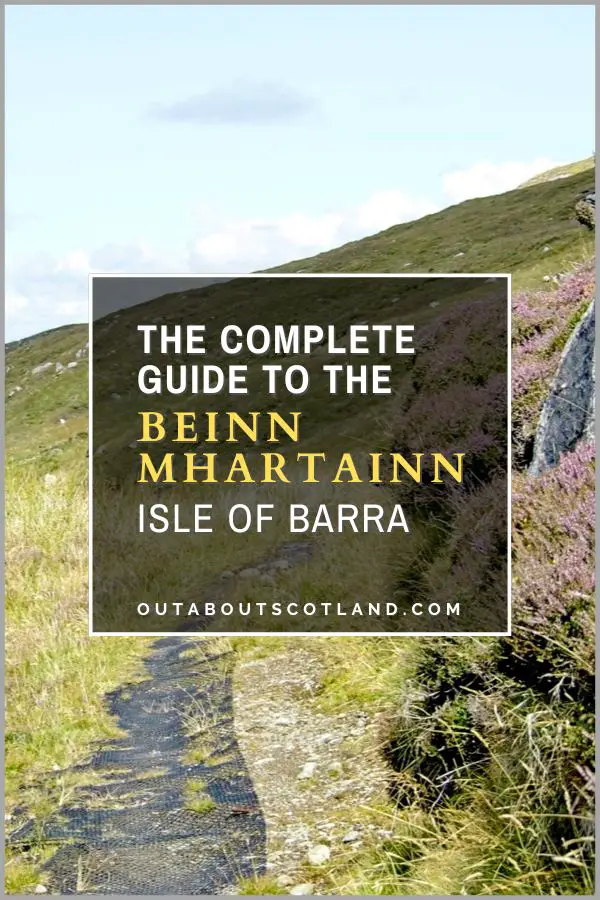The Isle of Harris is situated in the Outer Hebrides, where it borders the Isle of Lewis on its northern side and the isle of North Uist to the south. This is one of the most popular tourist destinations in Scotland’s Western Isles, primarily because Harris is home to some of the best beaches in the country and features a wild and rugged coastline that’s second to none for wildlife.
Discover this beautiful half of Harris and Lewis in this complete visitor guide, which includes an overview, handy visiting advice, and suggestions for things to do while you’re on this incredible island.
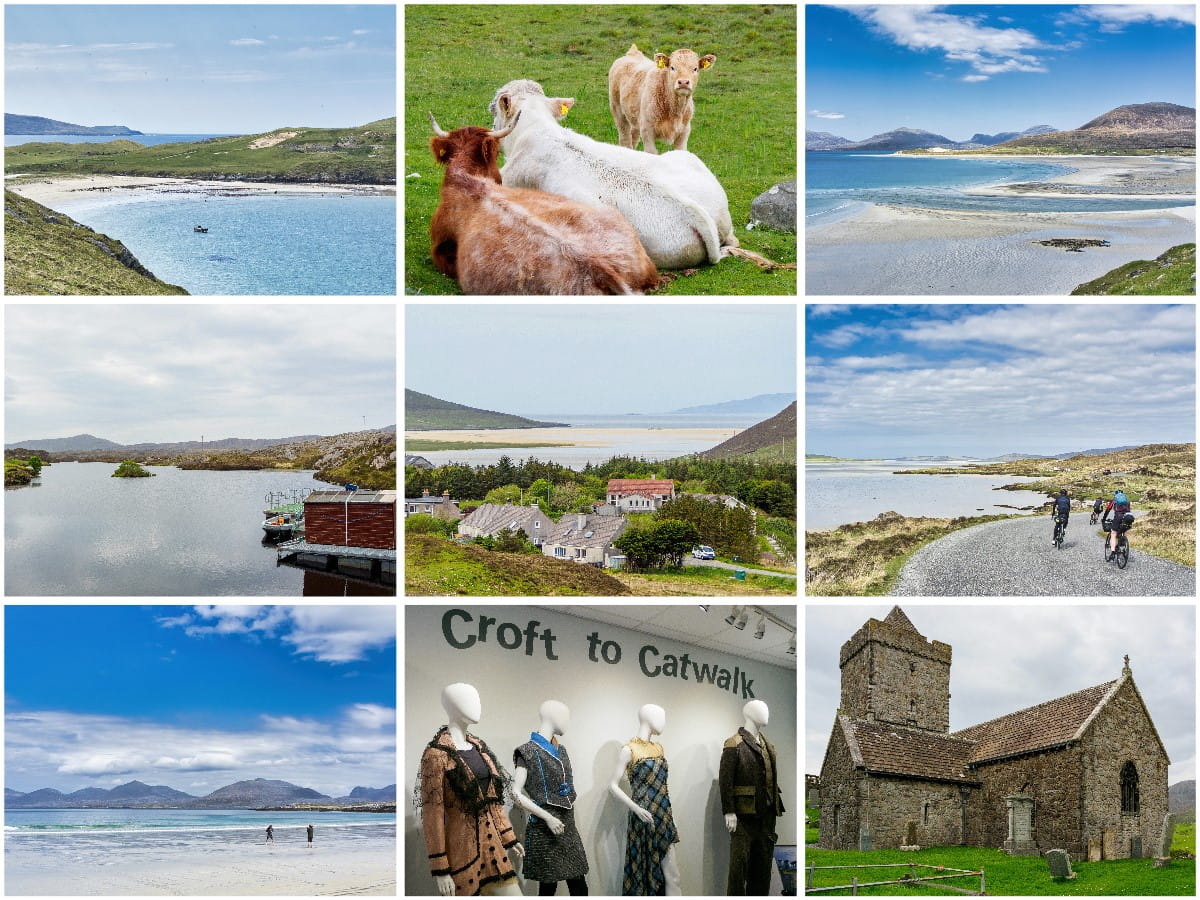
| Address: | Tarbert, Isle of Harris, HS3 3DL |
| Opening Hours: | The Isle of Harris is accessible 24/7 365 days a year. Access is dependent on Calmac ferry sailings. |
| Admission Price: | N/A |
| Parking: | Tarbert gin distillery: postcode HS3 3DJ Luskentyre beach: postcode HS3 3HL Clisham mountain: postcode HS3 3AQ Scalpay (Eilean Glas lighthouse): postcode HS4 3YG Huisinis Gateway: postcode HS3 3AY |
| Contact: | N/A |
| Facilities: | Tarbert: Gift shops, grocery shops, public toilets, car park, cafes, restaurants, ferry terminal. Huisinis Gateway: Car park, picnic benches, toilets, showers, tourist information, waste bins, freshwater standpipe. |
Overview
The Outer Hebrides – also known as the Western Isles – is situated approximately 30 miles off the west coast of the Scottish mainland. This archipelago consists of more than 70 islands, of which only 15 are inhabited and only 6 (Barra, South Uist, Benbecula, North Uist, Harris, and Lewis) are considered major tourist destinations.
These last two islands – Harris and Lewis – comprise the largest land mass in the island chain, although they are, in reality, one single island. Lewis lies to the north and Harris lies to the south, with the border between them consisting of a mountain range that entirely cuts off one side from the other.
Until the modern A859 road was built, it was incredibly difficult to travel between the two sides of Harris and Lewis, so the islanders that lived there identified themselves as either Harray (meaning ‘higher’) or Leogach (meaning ‘marshy’), which in time became translated as Harris and Lewis when English became the prominent language in Scotland.
There are a few major differences between Harris and Lewis, with Lewis being much larger, much flatter, and having many more freshwater lochs.
Harris, meanwhile, has a more mountainous landscape and more islands surrounding it, and it’s arguably more scenic, especially around the coastline. Harris is itself considered to be two different areas: North Harris and South Harris, which are separated by a thin strip of land between West Loch Tarbert and East Loch Tarbert.
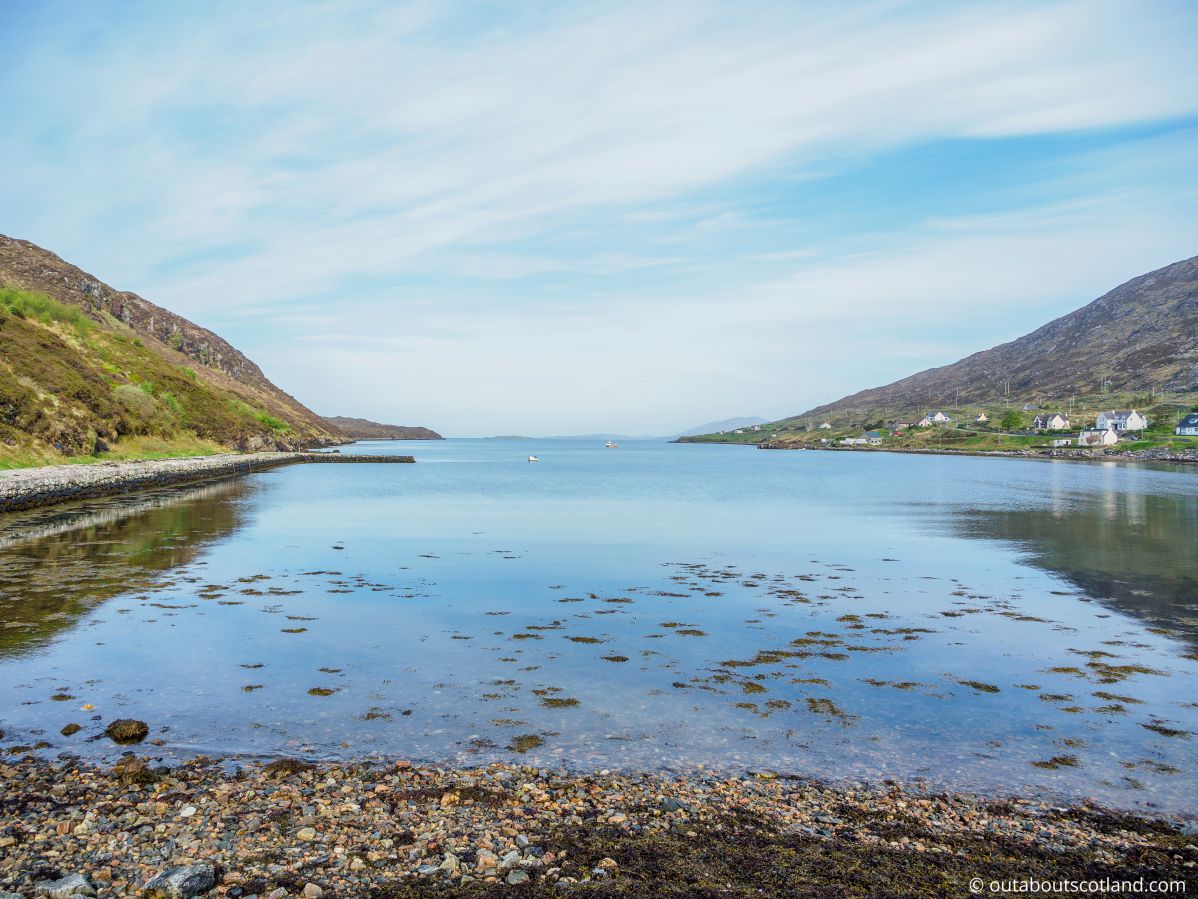
The land between these two sea lochs is the location for the village of Tarbert which is Harris’s main settlement and also the main entry point to the island thanks to a ferry terminal which operates regular return sailings to the Isle of Skye.
There are also ferry ports at Leverburgh on Harris, which connects to the Isle of Berneray, and Stornoway on Lewis, which connects to Ullapool on the mainland, making Harris one of the best islands in the Outer Hebrides for transport links.
As far as attractions go, Harris easily rivals Lewis, even though it’s far smaller. Tarbert has two major attractions: the Harris Distillery and the Harris Tweed Shop, and it’s within a 15-minute drive of the Isle of Scalpay which is a wild and rugged wee island with a fascinating historic lighthouse.
With regard to the distillery, I highly recommend popping inside as you can sample their award-winning Isle of Harris gin and will soon be able to try Isle of Harris whisky which will undoubtedly be just as delicious as the rest of their spirits.
Heading into North Harris, there are several mountains waiting enticingly for adventurous hikers, the most famous of which is Clisham, which also happens to be the highest mountain in the Outer Hebrides.
Moving west takes us to the North Harris Eagle Observatory and the fantastic trail through the Uisgneabhal Mòr, Teileasbhal and Stuabhal mountains to Loch Seaforth which has to be one of the finest walking experiences to be found anywhere in Scotland.
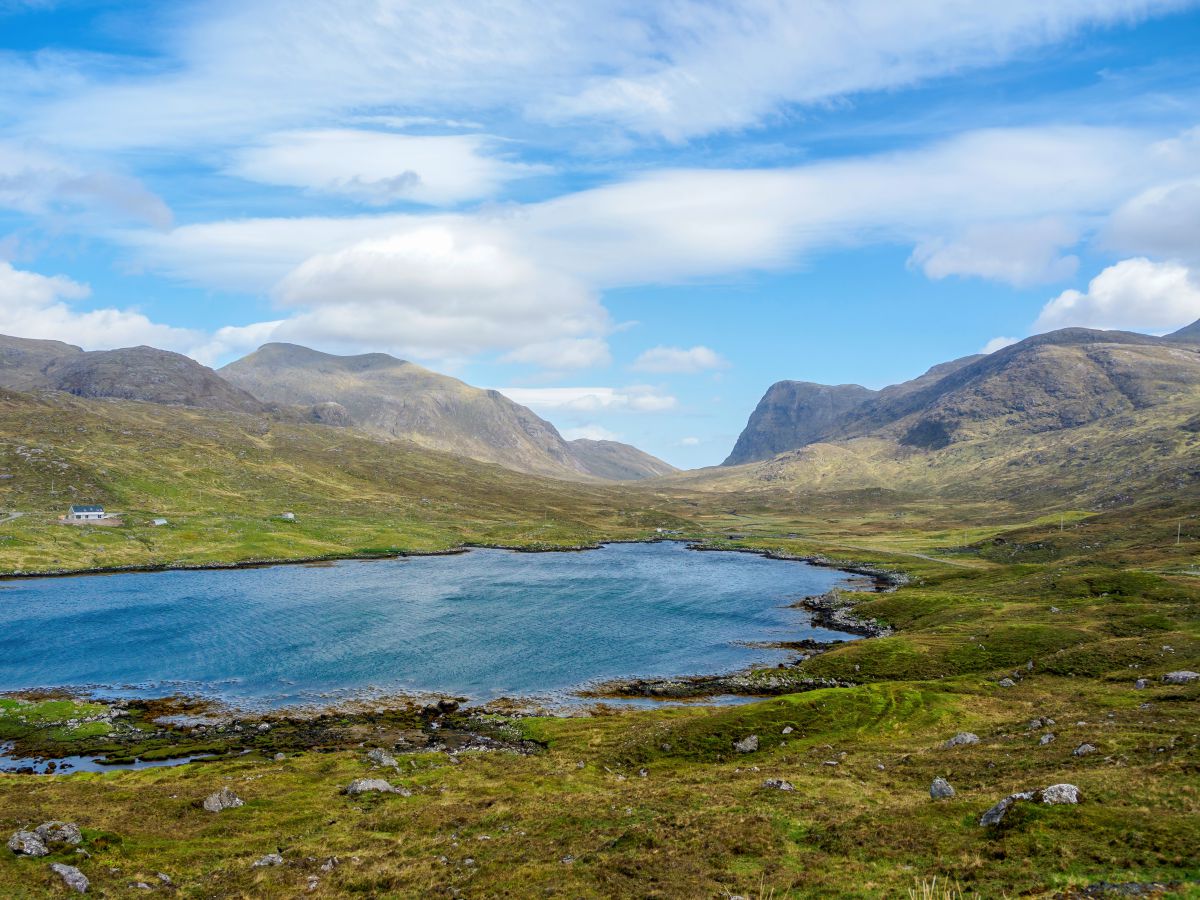
The far western point of North Harris, meanwhile, is the location of Hushinish and a peninsula that’s renowned for its remote beaches and hidden lochs as well as the hilly island of Scarp. Not only is Hushinish an amazing place to park up with a campervan, but it’s also perfect for trips around the coastline with a kayak, so if you’re feeling adventurous, I’d definitely add it to your sightseeing itinerary.
Heading over to South Harris, the landscape becomes flatter but it’s still hillier than most of Lewis. This is the area where you’ll find two of the best beaches in the entire Hebrides – Luskentyre and Scarista – which are absolute must-dos for anyone visiting the island.
Luskentyre has been voted many times over as one of the top 10 beaches in the world thanks to its powdery white sand and breathtaking views across to the hills of North Harris and the Isle of Taransay (filming location for the TV series Castaway 2000).
Scarista is equally vast and much quieter than Luskentyre due to a lack of parking spaces. However, that also means it’s usually very quiet, in stark contrast to the crowds that congregate around its northern neighbour.
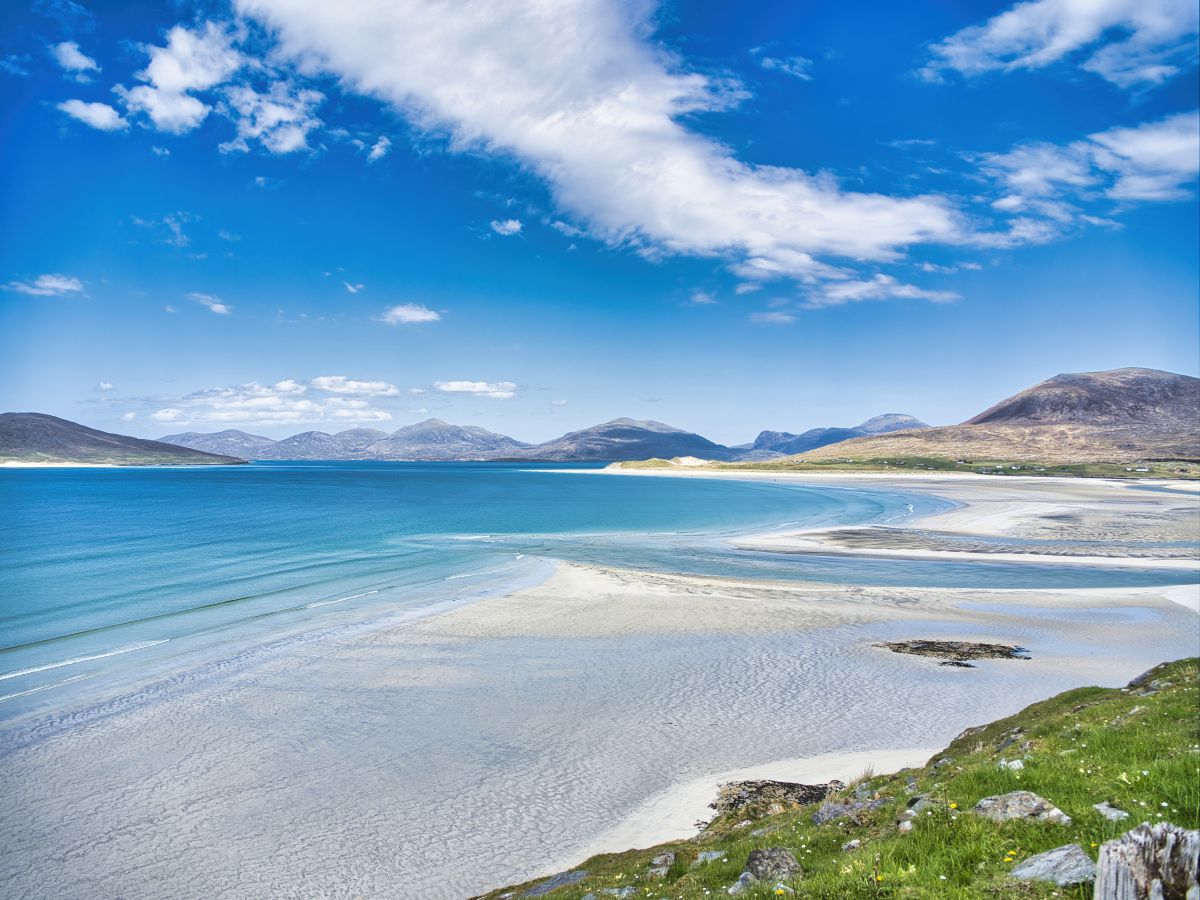
Book Tours in Scotland
The Highlights
1: The Isle of Harris is one of the most scenic islands in the Outer Hebrides. The northern half is home to a dramatic mountain range which includes the highest summit in the Western Isles as well as the attractive Isle of Scalpay and the wildlife haven of the Hushinish peninsula. South Harris, meanwhile, is flatter and offers visitors the chance to enjoy some of Scotland’s finest beaches, including the incomparable Luskentyre and Sgarasta Mhor.
2: The mountain range on Harris is definitely worth visiting for anyone that loves hiking around Scotland’s wildest regions. The highlight has to be Clisham which can be climbed on a direct – but steep – ascent from a car park on the A859. The return route is only around 3.5 miles, but the views at every step are nothing short of breathtaking.
3: The largest village on Harris is Tarbert which has a number of attractions including the main outlet of the Isle of Harris Knitwear company, the Isle of Harris Distillers which offers tours and tastings as well as a cafe, a ferry terminal with connections to Skye, and the majority of the island’s facilities including grocery stores and gift shops.
Tarbert is a good option for accommodation as it’s centrally located and offers easy access to Scalpay, Luskentyre, and the North Harris mountains. It also has the Isle of Harris Hotel which is the largest on the island and has an excellent restaurant inside.
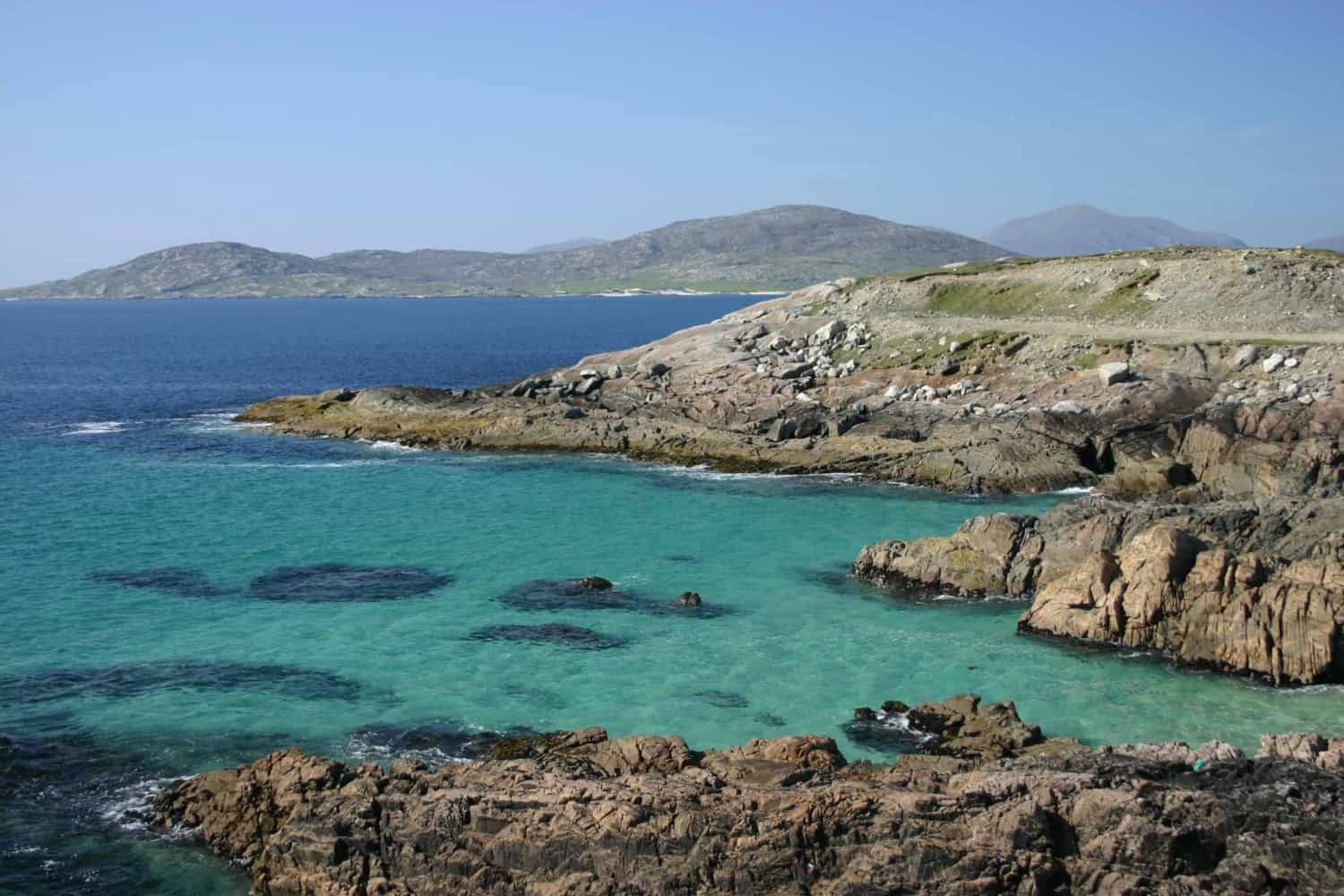
Visiting Tips
1: Luskentyre is one of the main attractions on Harris which means it’s also one of the busiest. If you’re thinking of heading there in the peak season I suggest travelling as early in the day as possible to secure a parking space.
There’s a car park at the end of the road leading to the beach with space for around 30 cars. However, if you’re travelling with a campervan you’ll find it easier to park on one of the roadside camping spots on Losgaintir Road.
2: There aren’t many places to eat on Harris but Tarbert has a nice pub and a restaurant at the Harris Hotel which is a wee bit dated but has friendly staff and quality food. If you’d prefer a coffee and a snack, I recommend heading a half-mile down the road to the gin distillery, which has a very good cafe inside it.
3: A must-do on Harris is walking along the route that leads to the North Harris Eagle Observatory. This is (in my opinion) the most scenic part of the island thanks to a combination of soaring mountain peaks and secluded lochs that surround the trail. There’s a small car park at the start of the observatory footpath, which leads directly onto a gravel track, so it’s a relatively easy way to enjoy the mountain range.
The more adventurous can continue past the observatory and walk into the shadows of the Uisgneabhal Mòr, Teileasbhal and Stuabhal mountains on a superb 12-mile circular walking route.

Protect Your Family From Scotland's Biting Midges
- Powerful, reliable protection for up to 8 hours
- Water- and sweat resistant
- Repels midges, mosquitoes, horse flies, sand flies, fleas and ticks
- Safe for use on adults, children over 30 months and pregnant women
- Non-sticky, moisturising with a pleasant fragrance
- Packaging may vary
Tourist Information
I’ve covered the main tourist attractions on Harris in the ‘Things to do’ section below, so I’ll just cover a few good-to-know tips about the island in this section. As far as activities go, you’re pretty much spoilt for choice on Harris.
As part of the 185-mile Hebridean Way touring route, Harris is a good place for cycling, though you’ll need powerful legs to power up the steep ascent from Tarbert to the mountains that separate the island from Lewis.
The A859 is spectacularly pretty all the way up to Loch Eireasort on Lewis, but after that it’s considerably less impressive. However, heading in the opposite direction presents two meandering but exceptional roads that should be on every cyclist’s route plan.
The first is the B887 heading to Hushinish. This 13-mile road passes the Harris eagle observatory and finishes at a causeway overlooking Scarp, closely following North Harris’s coastline for the entire journey. The road is narrow and very hilly, but it’s also very, very scenic, so if you’re a hardened cyclist, I thoroughly recommend it.
The second road I suggest you cycle takes the turning to Roghadal from the A859 around 3 miles before the turning to Luskentyre. I’ve given this route the nickname ‘the mad road’ (courtesy of Father Ted), as it’s pretty much non-stop hairpin bends the entire way.

That being said, it closely follows the beautiful eastern coastline of South Harris which is one of the nicest roads I’ve ever travelled on in Scotland, and it easily beats the A859 Hebridean Way route on the west side of the island for scenery (in my humble opinion).
The mad road is 11 miles in total and finishes at the tiny settlement of Rodel, which has a lovely wee church, St. Clements, which is famous for its gorgeous coastal setting. The village of Leverburgh is just 2 miles away and has a cafe where you can stock up on coffee and cake before returning either the way you came or continuing around the A859 on a 15-mile route back to Luskentyre.
Both roads offer a great walking experience too, but care needs to be taken as there are no footpaths, although the roadside verges are wide enough to hop onto if there’s oncoming traffic.
Another activity that’s popular with visitors is taking a boat trip to St. Kilda, an archipelago 55 miles to the west which is actually part of the civil parish of Harris. St. Kilda is an uninhabited archipelago that’s highly regarded as a tourist destination due to its wildlife as well as an abandoned village on the largest island, Hirta.
Boat trips operate out of Leverburgh from April to September with departures setting off at 8 am and returning at 7 pm which allows around 5 hours ashore to explore Hirta as well as sail around it. If the thought of spending several hours on a boat is making you seasick, you might prefer a few of the land-based attractions on Harris instead.
Aside from the outdoor delights of Luskentyre beach and Clisham mountain, there’s the Harris Gin Distillery in Tarbert which offers tours around the distillery with an expert guide who’ll explain the distillation process in detail.
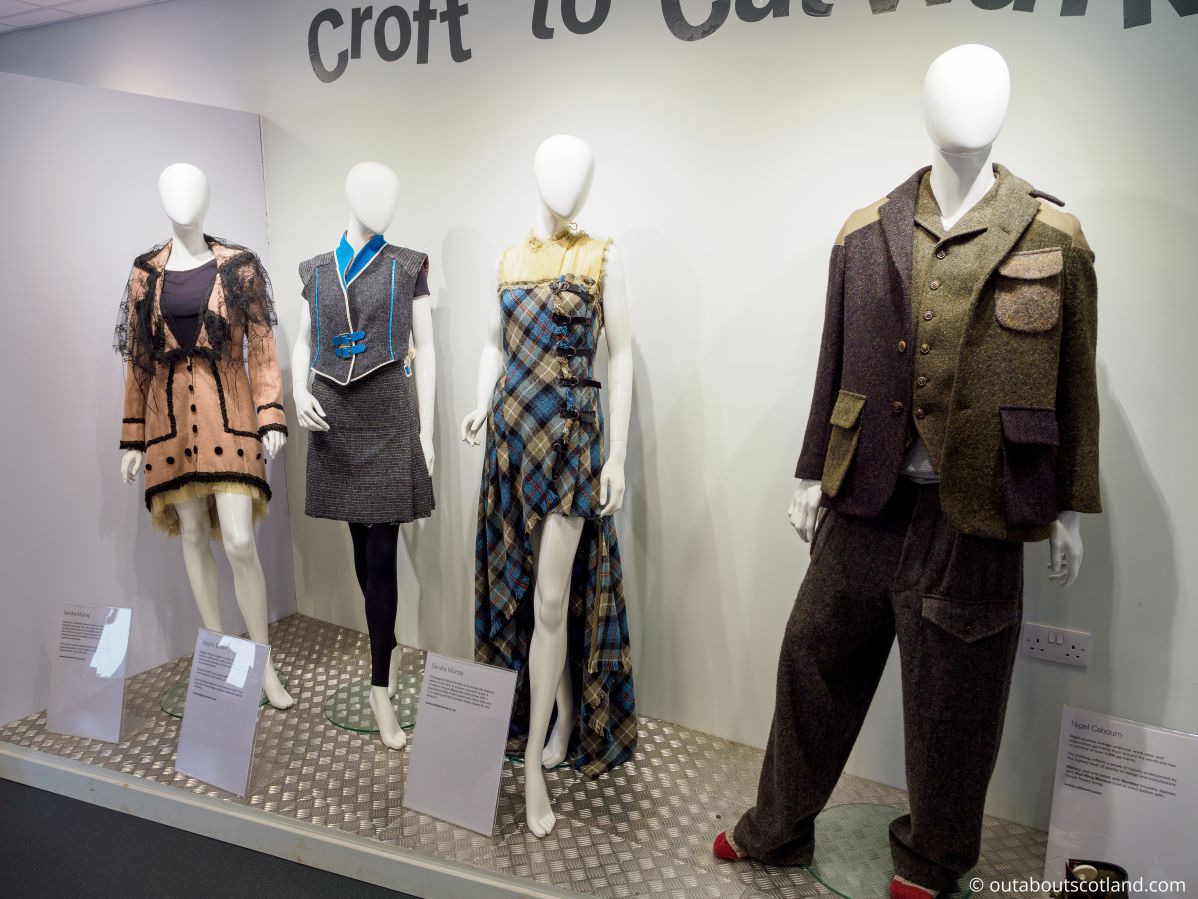
Afterwards, visitors can enjoy food in the cafe before walking across the road to the Harris Tweed shop which is the main outlet for the material on the island. Inside the shop, you can purchase lengths of genuine Harris Tweed in a multitude of colours, as well as pre-made gifts including everything from suits to coats and whisky bottles to fridge magnets.
Harris Tweed, if you’re not already aware, is a sturdy cloth manufactured on the island using only human-powered looms and wool collected from local sheep. This incredibly durable material has one of the world’s oldest logos and every piece carries the famous orb that signifies it’s the genuine article.
The story behind Harris Tweed is rather interesting so if you’d like to know more I recommend heading to the free Harris Tweed exhibition (postcode HS3 3DX) which has displays that explain the history of the material as well as how it’s made and how it’s used today.
A bonus of visiting the exhibition is that you’ll drive along the Golden Road (named after the cost of its construction) which winds its way around the island’s rocky east coast between Meabhag nam Bhaigh and Leacali.
If you drive this road take care as it’s single track with very narrow passing places and steep inclines which make it unsuitable for motorhomes, but the views are gorgeous and there’s a good chance you’ll see seals sunbathing on the rocks along the shoreline.
The last tourist attraction I’ll mention is the Seallam Centre at Northton (postcode HS3 3JA), which has a changing series of exhibitions that explore local life, culture, and history. This is the place to head if you have Hebridean ancestors that you’d like to research, and it also has a wee gift shop and a cafe.

Things to Do
Visit Luskentyre Beach: This is one of the most beautiful white sand beaches in Scotland. The crystal-clear turquoise waters and stunning views of Harris and Taransay make this the perfect spot for walking and spending a day relaxing on the beach.
Explore St. Clement’s Church: Located in the village of Rodel on the southern end of Harris, St. Clement’s Church is a 15th-century building that features intricate stone carvings and an atmospheric graveyard with stunning sea views.
Visit the Harris Tweed Shop: The Isle of Harris is famous for Harris Tweed, the durable, versatile material that is exclusively made on the island on human-powered looms. The main Harris Tweed shop in Tarbert sells a range of times made with the material, from suits to bags and keyrings.
Trek the Golden Road: This winding single-track road takes you through the wild landscape of the east coast of Harris. Driving the Golden Road offers visitors breathtaking views with plenty of opportunities for photography and birdwatching.
Visit the Seallam! Visitor Centre: This is the place to learn about the island’s history and genealogy. The centre offers exhibitions about the social history of the Outer Hebrides as well as its wildlife and its geology.
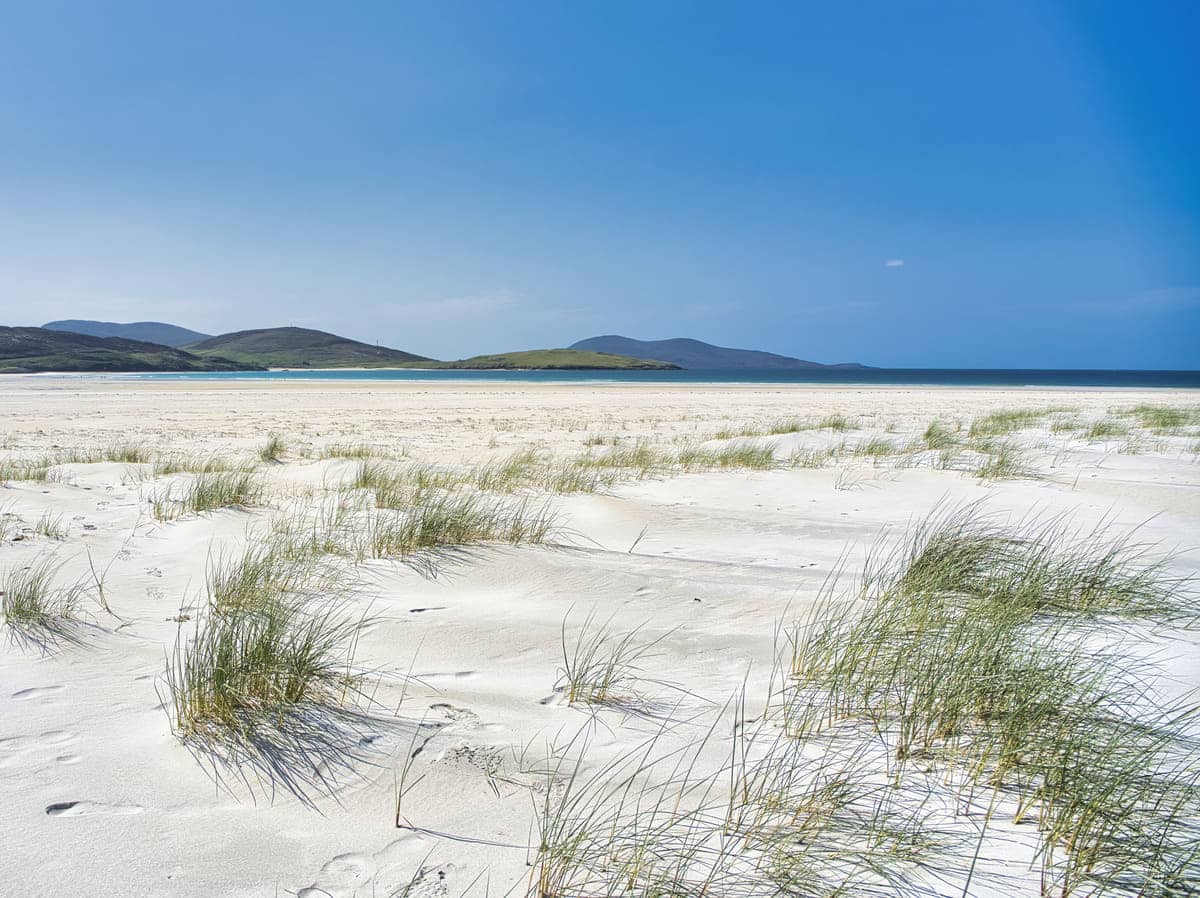
Book Tours in Scotland
Things to Do Nearby
Isle of Scalpay. Address: Isle of Scalpay, HS4 3YA.
The Isle of Scalpay is a small island (2.5 square miles) situated on the southeast corner of Harris. Visitors can stroll along circular trails through machair, peat bog, and moorland as well as explore 14 miles of rocky shoreline on the two islands thanks to a causeway that connects them. The main highlights of Sclapay are the Eilean Glas lighthouse and the island’s diverse wildlife, which includes seals, otters, and eagles.
Luskentyre Beach. Address: Luskentyre, HS3 3HL.
Luskentyre Beach is situated on the west coast of South Harris. It’s one of the largest beaches in Scotland and has been voted one of the finest beaches in the world by several tourism websites. The views are particularly scenic on Luskentyre Beach due to the Isle of Taransay (the filming location for Castaway 2000), which sits just over one mile to the west, and the hills of South Harris, which provide a backdrop to the scenery facing north.
Isle of Harris Distillery. Address: Tarbert, Isle of Harris, HS3 3DJ.
This is a lochside gin and whisky distillery situated near the ferry terminal in Tarbert on the Isle of Harris. Visitors can discover the history of Harris gin and see how it’s made before purchasing a bottle in the on-site gift shop.
Harris Tweed Shop. Address: Caberfeidh, Tarbert, Isle of Harris HS3 3DJ.
The Harris Tweed shop in Tarbert is the island’s main retail outlet for authentic Harris Tweed. This Alladin’s cave of tweed has every possible gift you can imagine as well as quality clothing made from the world-famous material. A separate shop opposite stocks industrial lengths of Harris Tweed for purchase by craftspeople.
Clisham. Address: Isle of Harris HS3 3AP.
Clisham is the highest mountain (designated as a Corbett) in the Outer Hebrides, with a total height of 2,621 feet. There are several paths that lead to the summit, but the most popular starts at a car park on the A859 and heads northwest on a straight line for 3.25 miles. Once at the top, climbers can enjoy a beautiful panorama across Harris and Lewis.
Frequently Asked Questions
What is the Isle of Harris famous for?
Harris is best known as a tourist destination due to its beaches (Luskentyre is the highlight), mountains, dramatic coastline, and varied wildlife.
The island is also known as the birthplace of Harris Tweed – the durable patterned fabric made from locally sourced wool.
Can you stay on the Isle of Harris?
The are many places to stay on the Isle of Harris, from hotels to guesthouses and Airbnb holiday rentals to campsites. A good resource to find accommodation is the Explore Harris website.
How do you get to the Isle of Harris?
The Isle of Harris can be accessed via Calmac ferry services that operate from Ullapool on the mainland to Stornoway, Berneray to Leverburgh, and Uig on Skye to Tarbert. See the Calmac website for further details.
Is the Isle of Harris the same as the Isle of Lewis?
The Isle of Harris and Lewis is one landmass, but it’s designated as two separate islands. This is because the mountain range on North Harris meant that in the past it was difficult to travel between the north and south regions of the island, so residents classified themselves as either being from Lewis (northern half) or Harris (southern half).
Harris is further subdivided into North Harris and South Harris, with both regions divided by an isthmus around the village of Tarbert.
Protect Your Family From Scotland's Biting Midges
- Powerful, reliable protection for up to 8 hours
- Water- and sweat resistant
- Repels midges, mosquitoes, horse flies, sand flies, fleas and ticks
- Safe for use on adults, children over 30 months and pregnant women
- Non-sticky, moisturising with a pleasant fragrance
- Packaging may vary




